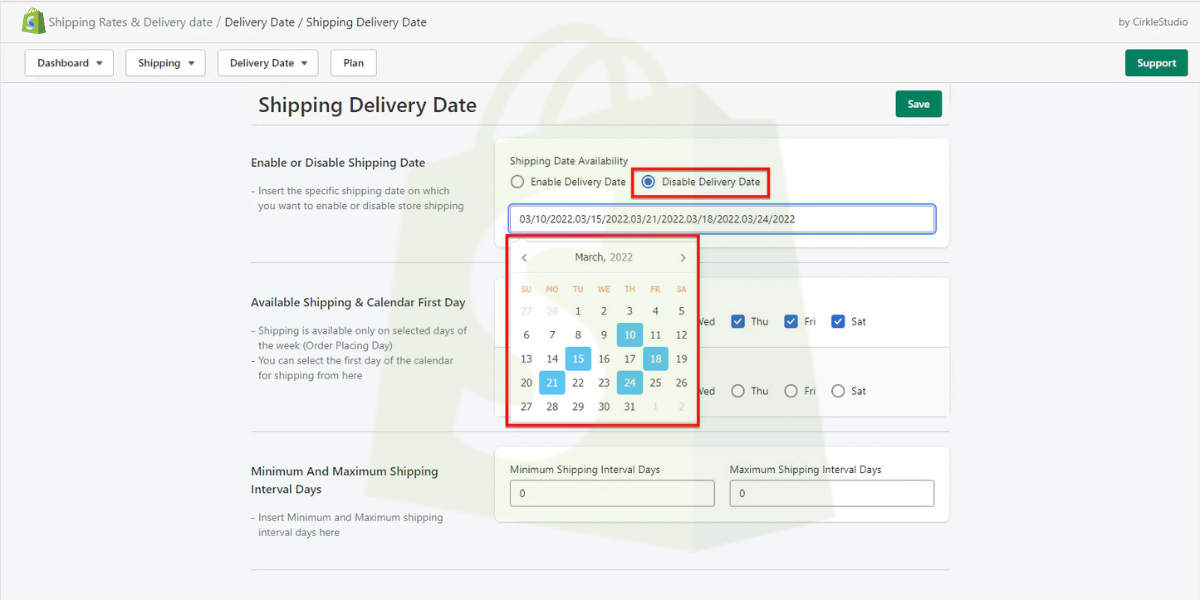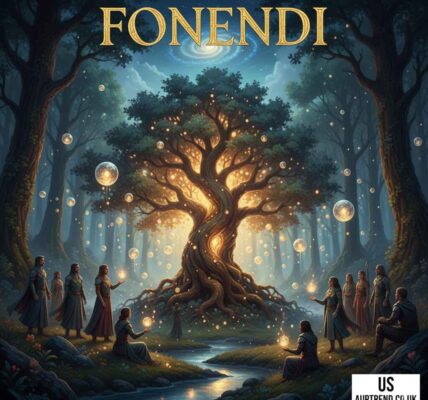
For a Shopify store, showing the actual estimated delivery date is one of the best ways to make the utilization of your store on that end great. It is always better for the customer to know at what time they should expect their orders. And thus, adding this feature to your site may increase the trust level toward you and your store, thereby reducing cart abandonment and presenting shoppers with an easier shopping experience.
There are some pre-made options from Shopify that automatically add shipping and delivery information, but if you have an estimate date that you have manually enter, it will give you a fair bit more control on how you can present it in order to meet specific needs with your own unique shipping time and method.
In the article that follows, we will guide you on how to add estimated delivery date for Shopify via custom code.
Why Add Estimated Delivery Date for Shopify via Custom Code
Online shoppers appreciate transparency. They would like to know the days their deliveries are going to be arriving and that is how an estimated delivery date comes in handy. The delivery date helps bring some transparency and trust to your account as it makes them know what to expect in time.
When you incorporate this feature into your store, here’s what you can expect to happen:
- You create an experience for your customers: when they know what is set to arrive, their unreliability decreases.
- Lower cart abandonment: When the time taken to deliver , customers are likely to buy more.
- Increase trust and transparency: Showing the date of delivering increases customer satisfaction and trust in your brand.
- Shopify’s Built-In Features vs. Custom Code
The in-shop shipping features are useful but a bit limited. For instance, Shopify will not automatically calculate estimated delivery dates for all shipping methods. It is here that adding custom coding comes into play. Add Estimated Delivery Date for Shopify via Custom Code in your Shopify will make a shipping experience fully customized to your needs by the business.
Understanding Custom Code for Shopify
- To add the estimated delivery date feature with some ease, you would have to use Shopify’s Liquid template language. It forms the core of Shopify themes, and you could build features uniquely for your store.
- With this custom code, here are a few things you can achieve:
- You will be able to calculate delivery times through shipping zones and carriers.
- Buffer days for orders’ processing can be add.
- Delivery dates shown dynamically, depending on various products or shipping options.
Steps to Add Estimated Delivery Date for Shopify via Custom Code
This is a step by step to add an approximate delivery date into your Shopify platform.
Step 1. Set Shipping Zones and Methods
You must configure shipping zones and methods in Shopify before adding any code. Identify which carriers you collaborate with, then figure their shipping times for several zones. This data will be the basis of your estimates for delivery dates calculations.
Step 2: Construction of a Formula for Delivery Date Calculation
- You will need to create a formula that calculates delivery time. The formula must include consideration of the following factors:
- Shipping times of each different zone and carrier used
- How long it takes to process orders
- Weekends and holidays, if used at all
- For instance, if your carrier’s shipping time is 5-7 days, and it takes two days to process an order, the equation will be: Processing Time (2 days) + Shipping Time (5-7 days)= Estimated Time of Delivery (7-9 days).
Step 3: Add Custom Code to Shopify Theme
Place the custom code in your theme files. It could be the cart.liquid or product.liquid templates to print the estimated delivery date on the fly. Add the script that will calculate and display the delivery date by using the variables defined in Step 2.
Step 4: Testing and Verifying the Code
Once you add the code, test the code. As a customer would, go through your shop and ensure that the estimated delivery date is showing as expected. You should also test to ensure different shipping zones are working correctly by checking the display of the right delivery times.
Step 5 Customizing the Display of Delivery Dates
Now that we have set the functionality, let’s now try to customize the styling. You could make the estimated delivery date text stand out on both the product and the cart pages. A meaningfully designed display will further improve user experience and reduce confusion over when products will arrive.
Benefits of adding estimated delivery dates using custom code
By now, you should see how beneficial it is for your business to add estimated delivery date for Shopify via custom code.
Personalized customer experience
The delivery estimates can be tailor to the specific location and shipping choice of every customer.
Better checkout flow
Make it more transparent; in this regard, your prospects for completing the transaction increase.
Control over shipping details
You will have the opportunity to identify what you show your customer and how
Common Problems Troubleshooting
The “unknown custom code” may sometimes conflict with third-party applications installed in your store or even other functions, so always look out for compatibility conflicts that needs alteration in the code. Always have a backup of your theme; if you do experience conflict, you only restore the previous theme that you saved.
Best Practices for Shopify Custom Code
- Keep your code clean and organized so that it’s easier to update later. Code can review and update periodically as Shopify and its themes will be changing.
- Still, if you do not intend to use custom code then, some of the Shopify applications can help you on estimated delivery dates. Some of these apps are as follows:
- Estimated Delivery Date Range Apps
- Delivery Date Manager
- Custom Shipping and Delivery Apps
Here is a table summarizing the history and developments on the topic of “Add Estimated Delivery Date for Shopify via Custom Code”:
| Year | Development | Description |
| 2006 | Launch of Shopify Platform | Shopify was founded, initially offering a simple platform for merchants to build and manage eCommerce stores. The ability to customize themes and functionality via code was introduced later. |
| 2013 | Introduction of Shopify Liquid Template Language | Shopify introduced Liquid, a powerful and flexible templating language, allowing merchants to customize the look and behavior of their online stores, including delivery estimates. |
| 2015 | Increased Customization with Themes | Shopify enhanced theme capabilities, giving store owners more flexibility in custom coding for features like delivery date estimation, while third-party apps also became popular for this purpose. |
| 2017 | Rise of Custom Code Solutions for Estimated Delivery Dates | As Shopify merchants sought more control over delivery estimates, custom code solutions became a popular alternative to third-party apps. Merchants could now add custom date logic directly to their themes. |
| 2018 | Improved Liquid Functions for Date Manipulation | Shopify expanded its Liquid language capabilities, making it easier for developers to manipulate dates (e.g., calculating shipping and delivery times). This enabled more accurate custom delivery date displays. |
| 2020 | Emergence of No-Code and Low-Code Tools | While custom coding remained popular, Shopify introduced more no-code options, and several apps became widely used for showing estimated delivery dates without the need for advanced coding skills. |
| 2021 | Focus on Customer Experience | Custom-coded solutions gained attention as merchants realized the importance of estimated delivery dates in improving customer experience and reducing cart abandonment. Many tutorials began surfacing on how to add estimated delivery dates via custom code. |
| 2023 | Dynamic Delivery Estimates with API Integrations | Shopify stores began integrating APIs like Shippo and AfterShip into custom-coded solutions, allowing dynamic calculation of estimated delivery dates based on live shipping data and customer locations. |
| 2024 | Current Trend: Customization and Personalization | In 2024, merchants increasingly prefer to customize the delivery date display via custom code, tailoring it based on shipping zones, methods, and real-time data while ensuring a branded experience. |
This table tracks the significant developments that have contributed to making it possible to add estimated delivery date for Shopify via custom code, providing a flexible and scalable approach to enhance the customer experience on Shopify stores.
FAQ’s
How long does it take to implement delivery date custom code in Shopify?
That would take me probably about 30 minutes or an hour to implement and test, assuming you understand Liquid language in Shopify.
Do I need coding experience to implement this?
No, some simple experience with coding is fine. There are loads of guides on the web that will help you add custom code without needing to be a coding guru.
Am I able to change the delivery date by product?
Yes. You can do this through custom code and through changing delivery dates to specific products or shipping zones.
Will updating my theme mess up my code?
Always be sure to back your theme before you make any changes. Do keep in mind that sometimes you’ll have to deal with theme updates that play havoc on your own custom code.
Does Shopify use multiple applications that work well with custom delivery date code?
Sure enough, there exist a whole array of apps that can add to the functionality of the delivery date feature or otherwise be used in conjunction with your custom code to deliver greater functionality.
Conclusion
Add estimated delivery date for Shopify via custom code will definitely add a bit of an experience to the shopping process of your customers. Unlike relying entirely on Shopify’s default settings, this procedure is far more labor-intensive; however, the benefits of personalization overrule the hard work. So the times will be spot on; therefore, you’ll be reducing cart abandonment, boosting sales, and making the purchase process even clearer for your customers.
learn more about trends at usauptrend




